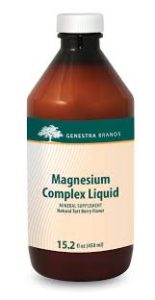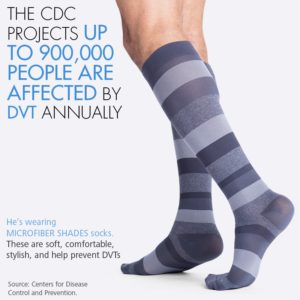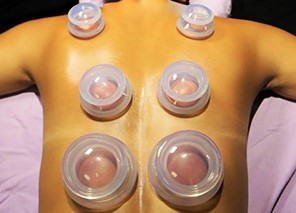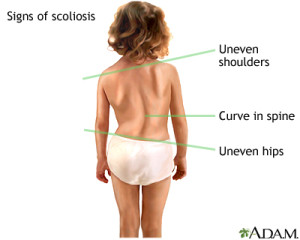 Magnesium is arguably the most important mineral in the body
Magnesium is arguably the most important mineral in the body
According to Norman Shealy, MD, PhD, an American neurosurgeon and a pioneer in pain medicine, “Every known illness is associated with a magnesium deficiency and it’s the missing cure to many diseases.” Not only does Magnesium help regulate calcium, potassium and sodium, but magnesium is essential for cellular health and is a critical component of over 300 biochemical functions in the body.
Even glutathione, your body’s most powerful antioxidant that has even been called “the master antioxidant,” requires magnesium for its synthesis. Unfortunately, most people are not aware of this, and millions suffer daily from magnesium deficiency without even knowing it.
Causes of Magnesium Deficiency
Once thought to be relatively rare, magnesium deficiency is more common than most physicians believe. Here’s why:
- Soil depletion, genetically modified organisms (GMOs) and the chemicals in our food have created a recipe for disaster. As minerals are removed, stripped away, or no longer available in the soil, the percentage of magnesium present in food has decreased.
- Digestive diseases, like leaky gut, can cause malabsorption of minerals, including magnesium. Today, there are hundreds of millions of people who aren’t absorbing their nutrients. Also, as we age, our mineral absorption tends to decrease, so the probability of having a deficiency increases across the board.
- Chronic disease and medication use is at an all-time high. Most chronic illness is associated with magnesium deficiency and lack of mineral absorption. Medications damage the gut which is responsible for absorbing magnesium from our food.
Should you worry about magnesium deficiency?
It all depends on your risk factors and presenting symptoms (see below). Also, approximately 80 percent of people have low levels of magnesium, so the chances are that you are probably deficient.
Take note: Only 1 percent of magnesium in your body is in your bloodstream, so often you can have a deficiency, and it would not even be discovered by a common blood test.
Magnesium Deficiency Symptoms
Many people may be magnesium deficient and not even know it. But here are some key symptoms to look out for that could indicate if you are deficient:
- Leg Cramps
Seventy percent of adults and 7 percent of children experience leg cramps on a regular basis. But leg cramps can more than a nuisance — they can also be downright excruciating! Because of magnesium’s role in neuromuscular signals and muscle contraction, researchers have observed that magnesium deficiency is often to blame. (1, 2)
More and more health care professionals are prescribing magnesium supplements to help their patients. Restless leg syndrome is another warning sign of a magnesium deficiency. To overcome both leg cramps and restless leg syndrome, you will want to increase your intake of both magnesium and potassium.
- Insomnia
Magnesium deficiency is often a precursor to sleep disorders such as anxiety, hyperactivity and restlessness. It’s been suggested that this is because magnesium is vital for GABA function, an inhibitory neurotransmitter known to “calm” the brain and promote relaxation.
Taking around 400 milligrams of magnesium before bed or with dinner is the best time of day to take the supplement. Also, adding in magnesium-rich foods during dinner — like nutrition-packed spinach — may help.
3. Muscle Pain / Fibromyalgia
A study published in Magnesium Research examined the role magnesium plays in fibromyalgia symptoms, and it uncovered that increasing magnesium consumption reduced pain and tenderness and also improved immune blood markers. (3)
Oftentimes linked to autoimmune disorders, this research should encourage fibromyalgia patients because it highlights the systemic effects that magnesium supplements have on the body.
4. Anxiety
As magnesium deficiency can affect the central nervous system, more specifically the GABA cycle in the body, its side effects can include irritability and nervousness. As the deficiency worsens, it causes high levels of anxiety and, in severe cases, depression and hallucinations.
Magnesium is needed for every cell function from the gut to the brain, so it’s no wonder that it affects so many systems.
5. High Blood Pressure
Magnesium works partnered with calcium to support proper blood pressure and protect the heart. So when you are magnesium deficient, often you are also low in calcium and tend towards hypertension or high blood pressure.
A study with 241,378 participants published in the American Journal of Clinical Nutrition uncovered that a diet high in magnesium foods could reduce the risk of a stroke by 8 percent. (4) This is profound considering that hypertension causes 50 percent of ischemic strokes in the world.
6. Type II Diabetes
One of the four main causes of magnesium deficiency is type II diabetes, but it’s also a common symptom. U.K. researchers, for example, uncovered that of the 1,452 adults they examined low, magnesium levels were 10 times more common with new diabetics and 8.6 times more common with known diabetics. (5)
As expected from this data, diets rich in magnesium has been shown to significantly lower the risk of type 2 diabetes because of magnesium’s role in sugar metabolism. Another study discovered that the simple addition of magnesium supplementation (100 milligrams/day) lowered the risk of diabetes by 15 percent! (6)
7. Fatigue
Low energy, weakness and fatigue are common symptoms of magnesium deficiency. Most chronic fatigue syndrome patients are also magnesium deficient. The University of Maryland Medical Center reports that 300–1,000 milligrams of magnesium per day can help, but you do also want to be careful, as too much magnesium can also cause diarrhea. (7)
If you experience this side effect, you can simply reduce your dosage a little until the side effect subsides.
8. Migraine Headaches
Magnesium deficiency has been linked to migraine headaches due to its importance in balancing neurotransmitters in the body. Double-blind placebo-controlled studies have proven that 360–600 milligrams of magnesium daily reduced the frequency of migraine headaches by up to 42 percent. (8)
9. Osteoporosis
The National Institute of Health reports that, “The average person’s body contains about 25 grams of magnesium, and about half of that is in the bones.” (9) This is important to realize, especially for the elderly, who are at risk of bone weakening.
Thankfully, there’s hope! A study published in Biology Trace Element Researchuncovered that supplementing with magnesium slowed the development of osteoporosis “significantly” after just 30 days. In addition to taking magnesium supplement, you will also want to consider getting more vitamin D3 and K2 to naturally build bone density. (10)
Are You at Risk?
So, who is most susceptible to a magnesium deficiency? According to the National Institute of Health (NIH), not every one is created equal in regards to metabolizing and assimilating magnesium. In fact, certain people are inherently at a greater risk of developing a magnesium deficiency.
Magnesium deficiency can be inherited genetically as an inability to absorb this important mineral. Also, a diet low in high magnesium foods, or even emotional or work stress can drain magnesium from the body. Whether inherited, through a deficient diet, or even stress, a magnesium deficiency can lead to side effects of migraines, diabetes, fatigue and more.
The four most prominent at-risk groups include: (11)
- People with GI complaints— It really all starts in the gut. Since most magnesium is absorbed in the small intestines, issues like celiac disease, Crohn’s disease and regional enteritis all have a tendency to cause magnesium deficiency. (12) Also, people who elect for surgeries involving the gut such as resection or bypass of the small intestines leave themselves vulnerable for magnesium deficiency.
- People with type II diabetes— Partly due to increased urination, type II diabetics and people suffering from insulin resistance are known to struggle with proper magnesium absorption. Lowering glucose concentrations in the kidneys through natural diet changes can be extremely helpful for these patients.
- The elderly— For several reasons, as people age their magnesium levels drop. First and foremost, studies have shown that the elderly simply don’t eat magnesium-rich foods as they did when they were younger. This is relatively easy to correct. The uncontrollable risk factor, however, is that as we age we naturally experience reduced magnesium intestinal absorption, reduced magnesium bone stores and excess urinary loss. (13)
- People struggling with alcohol dependence— Alcoholics often experience magnesium deficiency because of a combination of the reasons above. The easiest way to understanding this is to see alcohol as an “anti-nutrient.” It literally sucks the nutrients out of your cells, and prevents proper absorption/utilization of the vitamins and minerals that you consume.I would even go one step further and suggest that regular recreational alcohol use, not just alcohol dependence, can lead to magnesium problems. Consuming 1–2 glasses of wine a week is fine for most people but much more than that is highly taxing on your liver. Alcohol can also deplete the minerals in your body because it causes dehydration, gut floral imbalance, immune system compromise, disturbed sleep patterns and premature aging.
Soil Depletion Affects Magnesium Intake
What if you don’t fit in any of these buckets, and you’re young, vibrant and seemingly healthy? Does this mean that you’re off the hook? Not exactly.
Magnesium used to be abundantly present in most foods. However, in recent years, food has less and less magnesium due to the farming practices and changes in growing cycles over the last century.
In the Bible, farmers harvested crops according to a Sabbath cycle: six years on, one year off. This helps preserve the nutritional quality of the soil, which is transferred to the foods that we eat.
Studies have shown, for example, that the produce we eat today is a shadow of the nutritional quality of just 60 years ago.
According to a 2011 report published in Scientific American, (14)
The Organic Consumers Association cites several other studies with similar findings: A Kushi Institute analysis of nutrient data from 1975 to 1997 found that average calcium levels in 12 fresh vegetables dropped 27 percent; iron levels 37 percent; vitamin A levels 21 percent, and vitamin C levels 30 percent.
A similar study of British nutrient data from 1930 to 1980, published in the British Food Journal, found that in 20 vegetables the average calcium content had declined 19 percent; iron 22 percent; and potassium 14 percent. Yet another study concluded that one would have to eat eight oranges today to derive the same amount of vitamin A as our grandparents would have gotten from one.
The bottom line is that even if you eat a completely organic, non-GMO raw food diet, you’re still at risk because of soil depletion and our current capitalistic farming practices.
Even with this, you still want to make sure you are getting plenty of high magnesium foods in your diet.
Best Magnesium Supplements
If you think you might be more severely magnesium deficient, and you want to improve your levels more quickly, you may consider taking an all-natural supplement.
I recommended taking one of the following magnesium supplements:
- Magnesium Chelate— a form of magnesium that bonds to multiple amino acids and is in the same state as the food we consume and highly absorbable by the body.
- Magnesium Citrate— is magnesium with citric acid, which has laxative properties, and is often taken for constipation.
- Magnesium Glycinate— is a chelated form of magnesium that tends to provide high levels of absorption and bioavailability and is typically considered ideal for those who are trying to correct a deficiency.
- Magnesium Threonate— is a newer, emerging type of magnesium supplement that appears promising, primarily due to its superior ability to penetrate the mitochondrial membrane, and may be the best magnesium supplement on the market.
- Magnesium Chloride Oil —this form of magnesium is in oil form. It can pass through the skin and into the body. For those who struggle with digestive issues like malabsorption, this is the best form of magnesium to take.
Magnesium Side Effects
Just as a reminder, when taking 600 milligrams or more of magnesium, 20 percent of people taking magnesium as a supplement can experience diarrhea.My recommendation is to hover around the 300–400 milligrams amount and consult your natural health physician if you experience any disturbances in your GI tract.
Leg Health Tips
How to Play Your Part to Keep Your Legs Healthy:
- Avoid sitting or standing for long periods of time. Our circulation improves with physical activity, so GET UP! Take a short walk, climb stairs, or make an effort to move around the office and at home. Avoid prolonged sitting or standing as this may increase leg pain and swelling.
- After a long tiring day, especially during the summer, revitalize your legs with a cool shower or bath. Avoid extended exposure to heat from sunbathing, hot baths, or the sauna as excessive heat will cause your veins to dilate and may induce swelling.
- Elevate your legs. To boost your body’s natural circulation, elevate your legs while you are sitting on the sofa or lying in bed at home. At the office, keep a leg rest under your desk.
- Work out. Regular exercise helps keep your body healthy. Some sports are better for improving circulation, such as swimming, walking, biking and yoga.
- Control your weight. When you manage your weight through a healthy diet and regular exercise, you are more likely to have less leg symptoms and/or less swelling.
- Wear graduated compression socks and stockings. SIGVARIS quality compression socks and stockings improve venous circulation to prevent and treat venous problems.
SIGVARIS has an assortment of products designed to fit your lifestyle. These products can help improve your circulation, increase your energy and aid in keeping your legs healthy. Your physician, pharmacist or SIGVARIS Certified Fitter can help you determine which SIGVARIS product is right for you. SIGVARIS guarantees the compression level in our products for 6 months.
SIGVARIS graduated compression is medicine you wear. Patients who benefit from graduated compression include:
- People who stand or sit for long periods of time daily
- People who have been prescribed anticoagulants
- People who travel
- Women who are pregnant
- People who have had a Deep Vein Thrombosis (DVT)
- People who experience swelling in their legs and feet
- People with varicose and/or spider veins

10 Back Healthy Spring Cleaning Tips
It’s that time of year again spring is finally here! We are all itching to get outside, open those windows and air out our homes. With the flowers budding and birds chirping also comes our annual spring cleaning routine. Here are some handy tips to keep your back healthy:
- Don’t try to do everything in one day; spread your chores throughout the week and be sure to take plenty of breaks.
- Transfer your weight back and forth between your front and back feet while vacuuming. Your body weight propels the vacuum as you lunge. It’s also a good idea to switch hands occasionally to keep your muscles balanced, thereby reducing back strain. Take small strides.
- Avoid lifting heavy objects, ask for help!!If you have to lift a heavy object, bend from the knees, not from your waist. Did you know, that bending your knees doesn’t guarantee a safe lift? The important thing is to keep your back straight. How? That’s simple. Just bend your hips and push out your chest.
- Avoid over reaching and bending whenever possible.
Try to do most of your activities either seated or standing upright. The more forward you bend or more toward the side you bend, the more stress you place on your back, including the muscles, ligaments, and even discs and joints.
- Plan in advance and keep cleaning items nearby. Open windows to avoid scents of ammonia.
- Take caution when cleaning high or hard to reach surfaces.
Make sure you have a stable surface to climb on to reduce the risk of falling and hurting yourself. Make sure your step stool or ladder is on an even surface and it will not slide out from underneath of you.
- Stretch before, during and after you clean!
- When raking use both sides of your body, not just your favourite side.
- When weeding your garden do this in short increments not all at once. Bend at the knees not the waist (like a squat) or better yet sit down!
- Get your kids or spouse to do it!

From time to time it is a really good idea to sit down with yourself and do an introspective review of your life. In other words, do an honest self-assessment as to the success and satisfaction levels in your life. You may find that you have let things slide that you were once interested in or have forgotten some of your goals. Or maybe your life circumstances may have changed and you need to change your way of doing things or your priorities.
In other words, it may be time to hit your “refresh” button and make some adjustments to your goals, your needs and so on.
Here are some questions that you could ask yourself:
- What were your goals when you chose your profession?
- Which of those goals haven’t you yet achieved?
- Are they still what you want?
- Are there new goals that have arisen that you would now like to accomplish?
- Have you achieved all your goals and need a new game?
- Do you have goals that seem impossible to reach?
- What hours would you ideally like to work?
- Are you taking enough vacation time annually?
- Are you spending enough time with your family?
- Do you have time for other activities that you love?
- Could you be busier?
- Are there technical training courses you would really like to do?
- Are you letting things slide? If yes, what are they?
- Are there things you would like to accomplish but feel are impossible?
- Are all your debts paid off?
- Are you doing proper financial planning towards become debt-free?
- Are you putting away investments to cash in when you retire?
- If you are 5 to 10 years from retirement, have worked out an exit plan?
SUMMARY
If you were honest in doing this self-assessment there probably were number of areas of your life and your practice that you would like to hit the “refresh” button on. Now you need to make some actual plans to bring about those changes.
Start with small stuff and get them done and work up towards the more difficult ones.
Life is to be lived and enjoyed! Make it so!
Are you tired if suffering with headaches, low back pain, aches, pains? Let us help you achieve your health goals in 2017! Meet our team and check out our wide array of services!
Dr. Sue is introducing a new technique to Health Works!
Myofascial Cupping!

Myofascial cupping is directed at the muscular and skeletal system of the body. This form of therapy uses mechanical suction equipment to create the required vacuum. A cup or a cylinder is attached to a hand-operated suction pump and this cup is applied on the skin. The chiropractor may first palpate the patient’s body to locate the areas that need treatment. Later, cream is spread on the skin before attaching the cup. Cups of varying sizes can be used and often, more than one cup is applied at a single time.
Typically, there is minimal bruising that dissipates in a few days time. The patient also does not experience any pain. Myofascial cupping attracts blood to the affected area that brings the essential nutrients to assist in healing. The reverse pressure exerted by the suction gently increases flexibility in the tissues and eliminates swelling if any. This form of therapy works very effectively in case of patients that cannot undergo acupuncture treatment.
Myofascial cupping is used to relieve any injuries received when playing sports, repetitive strain injuries, chronic pain conditions and acute flare-ups. Patients with conditions related to the muscles and bone structure will find that this therapy is very effective. Ailments like back
and neck pain, sprained muscles, strained tissues and other such problems can be alleviated with the use of myofascial cupping.
If you are interested in learning more or would like to book in with Dr.
Sue for a cupping appointment please call the us at 705-526-6900.
How does graduated compression therapy help with the management of venous problems?
How does graduated compression therapy help with the management of venous problems? As a person walks, the contraction and relaxation of the calf muscles around the veins aid in moving blood toward the heart. The external graduated compression of compression socks and stockings act as a layer of muscle by gently squeezing the stretched vein walls together, allowing the valves to close. The cavity of the vein is reduced, thereby restoring blood flow to a normal state and aiding overall circulation.
To be most effective, the socks or stockings should be put on at the start of your day and removed before you go to bed. Some people have an inherited weakness of the vein walls or valves which creates additional challenges to venous return. Wearing graduated compression socks or stockings is vital for the prevention and
treatment of varicose veins and other circulatory problems.
ARE YOU EXPECTING?
Pregnancy plays a role in the development of varicose veins. Thirty percent of women pregnant for the first time, and 55 percent of women who have had two or more full term pregnancies develop varicose veins. Women who are pregnant are also at a high risk for the development of a Deep Vein Thrombosis, known as DVT. One reason is due to the increased blood volume at full term. Additionally, pregnancy causes hormonal changes that
and 55 percent of women who have had two or more full term pregnancies develop varicose veins. Women who are pregnant are also at a high risk for the development of a Deep Vein Thrombosis, known as DVT. One reason is due to the increased blood volume at full term. Additionally, pregnancy causes hormonal changes that
increase blood coagulability, a measure of how easily blood clots. Wearing compression socks can help keep your legs healthy during pregnancy and beyond.
TRAVELLING OR SITTING ALL DAY?
People are traveling long distances and having to remain seated for long periods of time. When movement is constrained, the blood circulation in the legs is restricted. This can lead to several symptoms such as heavy legs, leg pain, swollen feet and ankles. Prolonged sitting is also a major risk factor for development of phlebitis and thrombosis (blood clot formation). These blood clots can migrate to the lungs resulting in a pulmonary embolism.
The discomfort and risk of Deep Vein Thrombosis (DVT) applies to other types of long distance travel such as car, train or bus. When remaining seated without moving for over 4 hours, the risk of DVT could be four times higher. A DVT can happen to anyone during travel, regardless of age, weight, or lifestyle.
A simple and comfortable way to help relieve the symptoms of heavy legs, leg pain, swollen feet and ankles during travel is to wear graduated compression stockings. Compression stockings also reduce the risk of developing more serious conditions such as phlebitis or deep vein thrombosis or pulmonary embolism.
ARE YOU ATHLETIC?
A growing tr end among professional and amateur sportsmen is the use of graduated compression socks or sleeves to help improve their athletic performance and recovery. Whether it is during the actual event, after the event, or while traveling, today’s sportsmen are making graduated compression socks and sleeves a part of their equipment. When blood is properly circulated, it restores much-needed oxygen and nutrients to tired muscles that have been deprived during a workout. Sports compression products help muscles regenerate more efficiently and to remove any lactic acid that has built up.
end among professional and amateur sportsmen is the use of graduated compression socks or sleeves to help improve their athletic performance and recovery. Whether it is during the actual event, after the event, or while traveling, today’s sportsmen are making graduated compression socks and sleeves a part of their equipment. When blood is properly circulated, it restores much-needed oxygen and nutrients to tired muscles that have been deprived during a workout. Sports compression products help muscles regenerate more efficiently and to remove any lactic acid that has built up.
Scoliosis: Have you had your child screened?
We can help you!
What is a scoliosis?
Scoliosis is a lateral curve of the spine often resulting in a “C” or “S” shape, when viewed from the back.
What are the different types of scoliosis?
Congenital: Caused by a bone abnormality present at birth.
Neuromuscular: A result of abnormal muscles or nerves. Frequently seen in people with spina bifida or cerebral palsy or in those with various conditions that are accompanied by, or result in, paralysis.
Degenerative: This may result from traumatic (from an injury or illness) bone collapse, previous major back surgery, or osteoporosis.
Idiopathic: The most common type of scoliosis, idiopathic scoliosis, has no specific identifiable cause. There are many theories, but none have been found to be conclusive.
What puts your child at risk?
A number of medical conditions can predispose children to scoliosis, studies show that scoliosis tends to run in families and may have a genetic component. It may also be due to poor adaptation to an injury, poor posture or asymmetrical muscular development.
Scoliosis is more common in girls and often develops during puberty.
The development of scoliosis is usually gradual and almost always painless. Although rare, scoliosis has the potential to lead to serious health problems, such as severe back pain, difficulty breathing, physical deformity, and even injury to the lungs and heart. Take a few minutes to assess your child, watch for:
- Head tilt
- Unleveled shoulders
- Unleveled hips
- Ankle rolling in/out
- Head rotation
- Unleveled Elbows
- Unleveled Knee creases
BOOK YOUR CHILD FOR A FREE SCOLIOSIS SCREENING!
Our chiropractors are uniquely trained to diagnose scoliosis and through treatment can control and reduce the symptoms. If you notice any of the indications listed above call us at Health Works at 705-526-6900 and have your child properly assessed today!
Moore, K., A. Dalley, and A. Agur. *Clinically Oriented Anatomy*. 6th ed.Baltimore: Wolters Kluwer, 2010. Print.
Backpack Safety: Pack It Light, Wear It Right.
Backpacks Can Affect Your Children’s Health:
Carrying a heavy load that is unevenly or improperly distributed can result in poor posture; and even distort the spinal column, throwing it out of alignment. This can cause muscle strain, headaches, back, neck and arm pain, and even nerve damage.
Choose The Right Backpack:
Forget leather! Sure, it looks great but it’s far too heavy. Go for vinyl or canvas. Pick a backpack that has two double wide, adjustable, padded shoulder straps, along with a chest and waist strap, padded back and lots of pockets. Make sure the backpack fits properly; it is not to snug around the armpits and is sized proportionately to the wearer’s body.
Pack It Properly:
They’re not moving out! Make sure your children’s packs contains only what they need for that day, and that the weight is distributed evenly. It’s a good idea to know roughly what each item weighs. The total weight of the filled packs should be no more than 10-15 % of the wearers own body weight. Pack heaviest objects close to the body, and place bumpy or odd shaped one on the outside away from the back.
The Right Way To Wear A Backpack:
Both shoulder straps should be used, and adjusted so that the pack fits snugly to the body, without dangling to the side. Backpacks should never be worn over just one shoulder. You should be able to slide your hand between the backpack and your child’s back. The waist strap should also be worn for added stability.
A child should never be in pain:
If your child is experiencing pain there is something wrong. Our team at Health Works can help treat your child’s pain conditions, from headaches to strains, sprains, and growing pains!! Give us a call at 705-526-6900 to book your child’s assessment today.
Ontario Chiropractic Association. “Pack It Light, Pack It Right.” Web. 4 May 2016.
